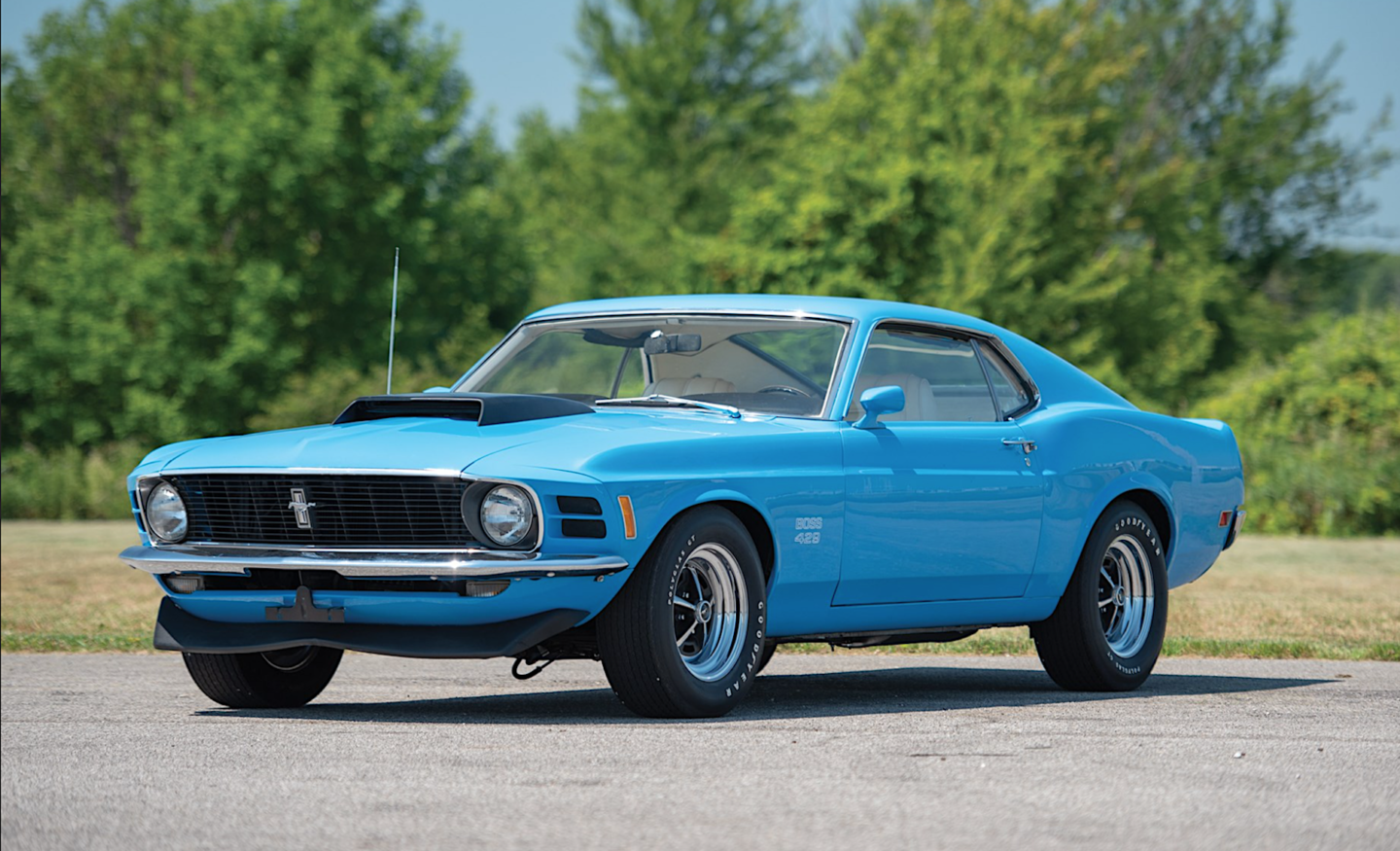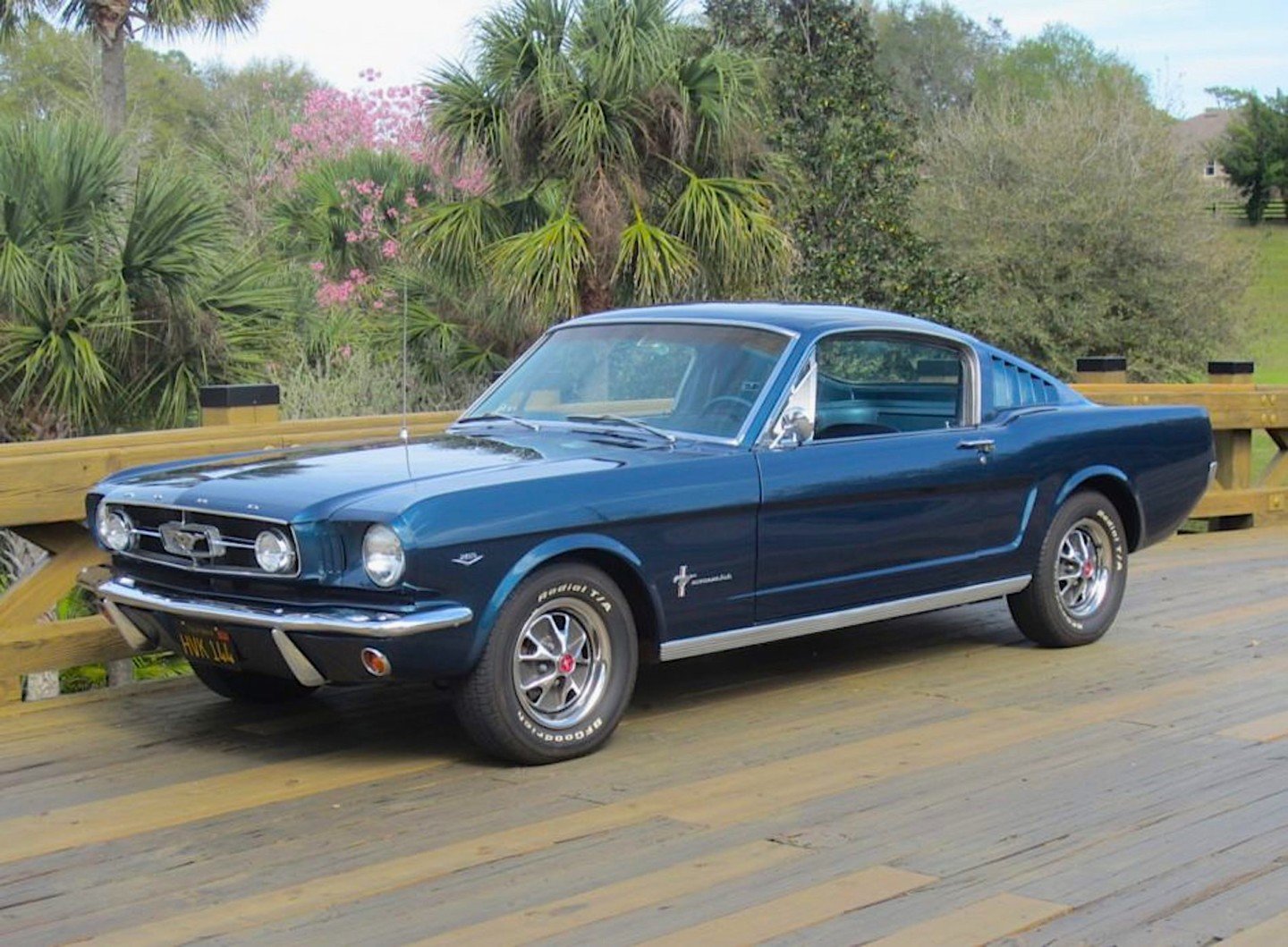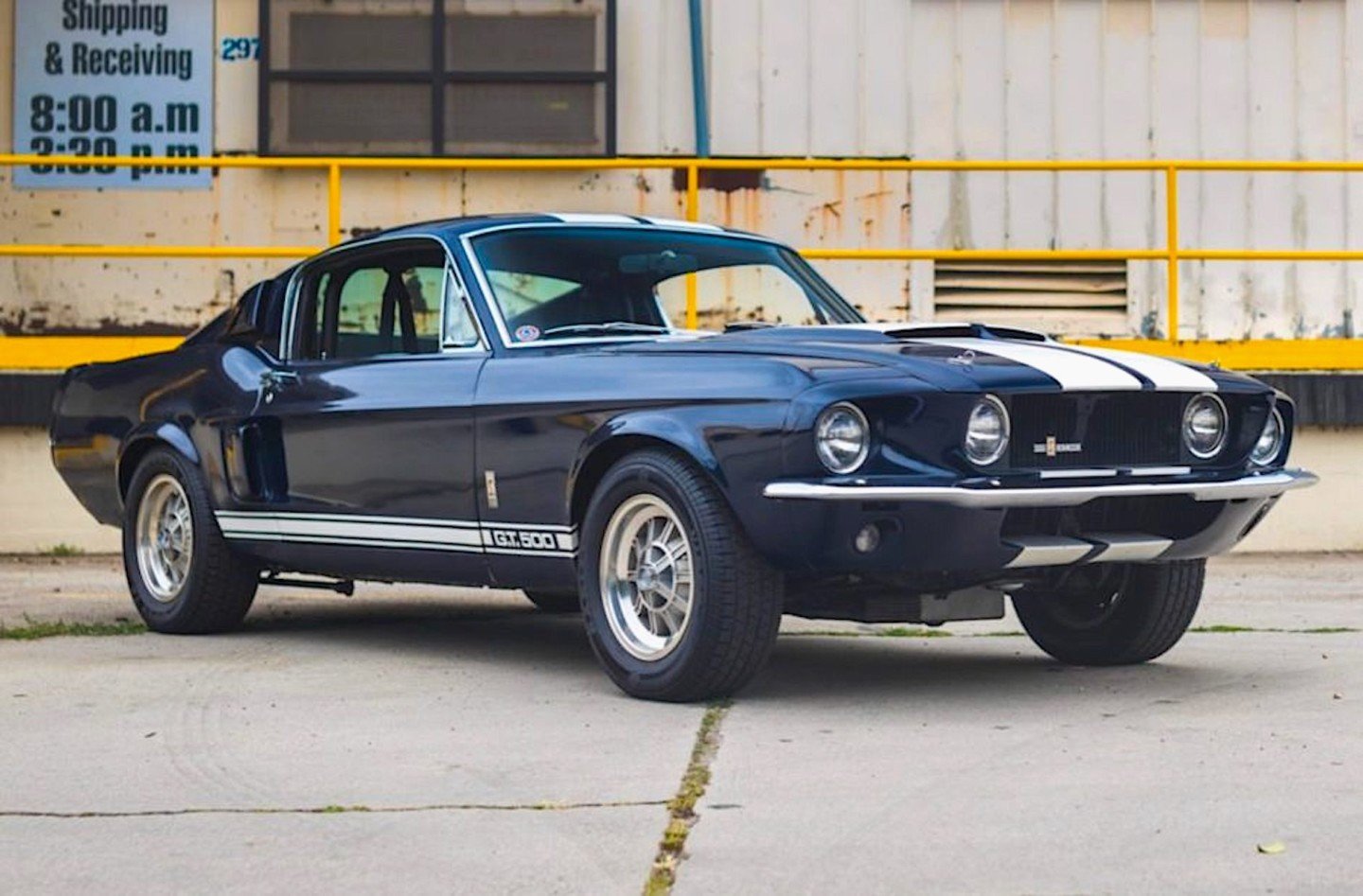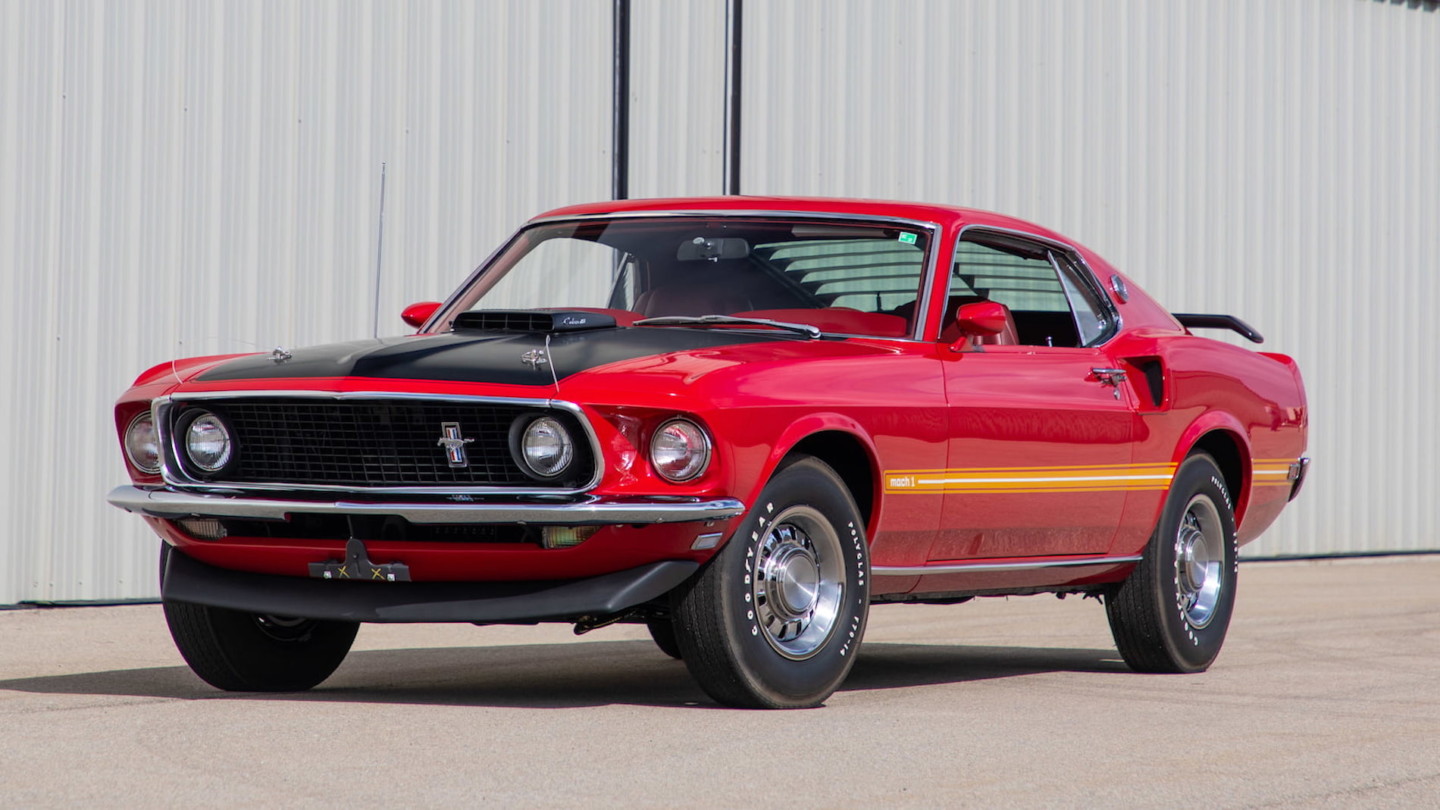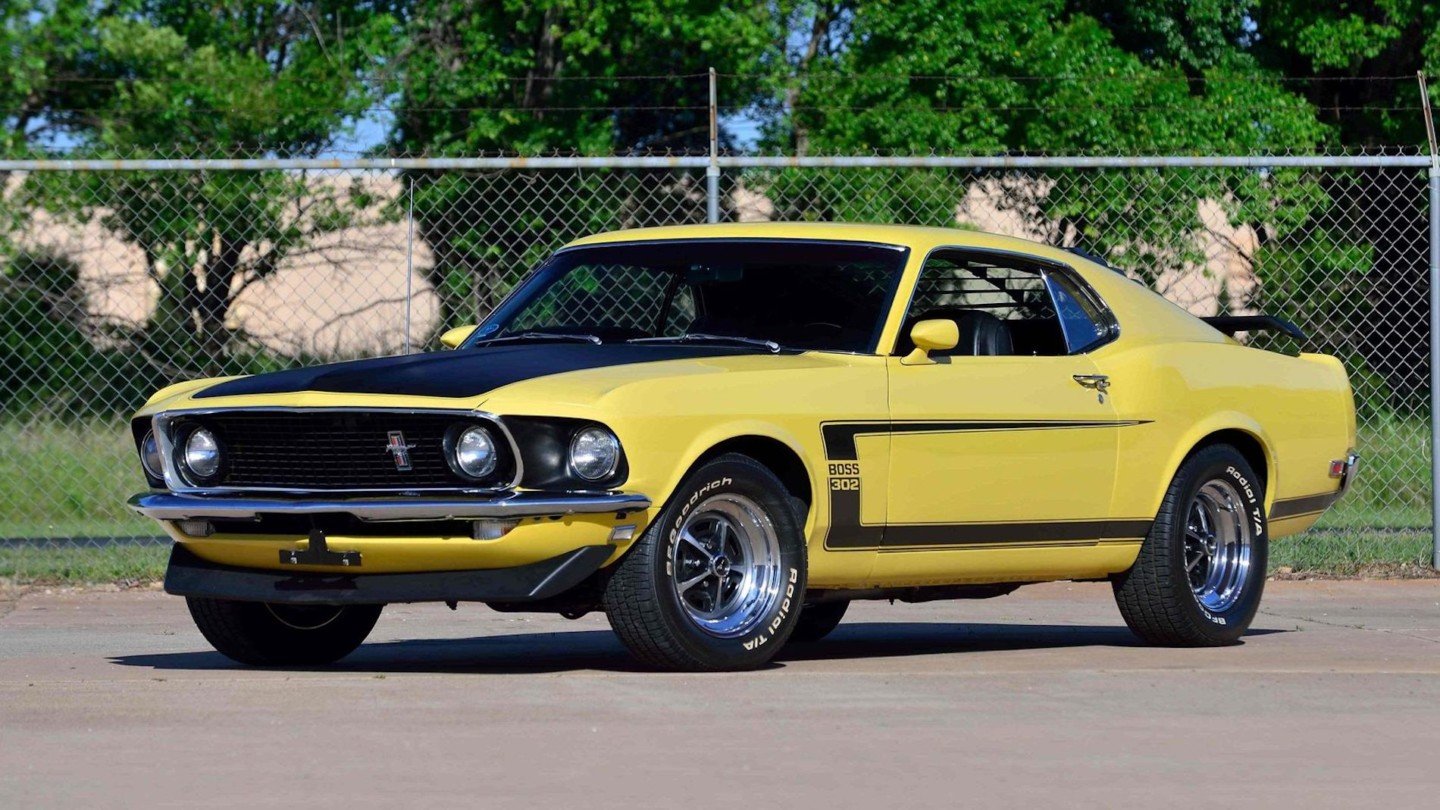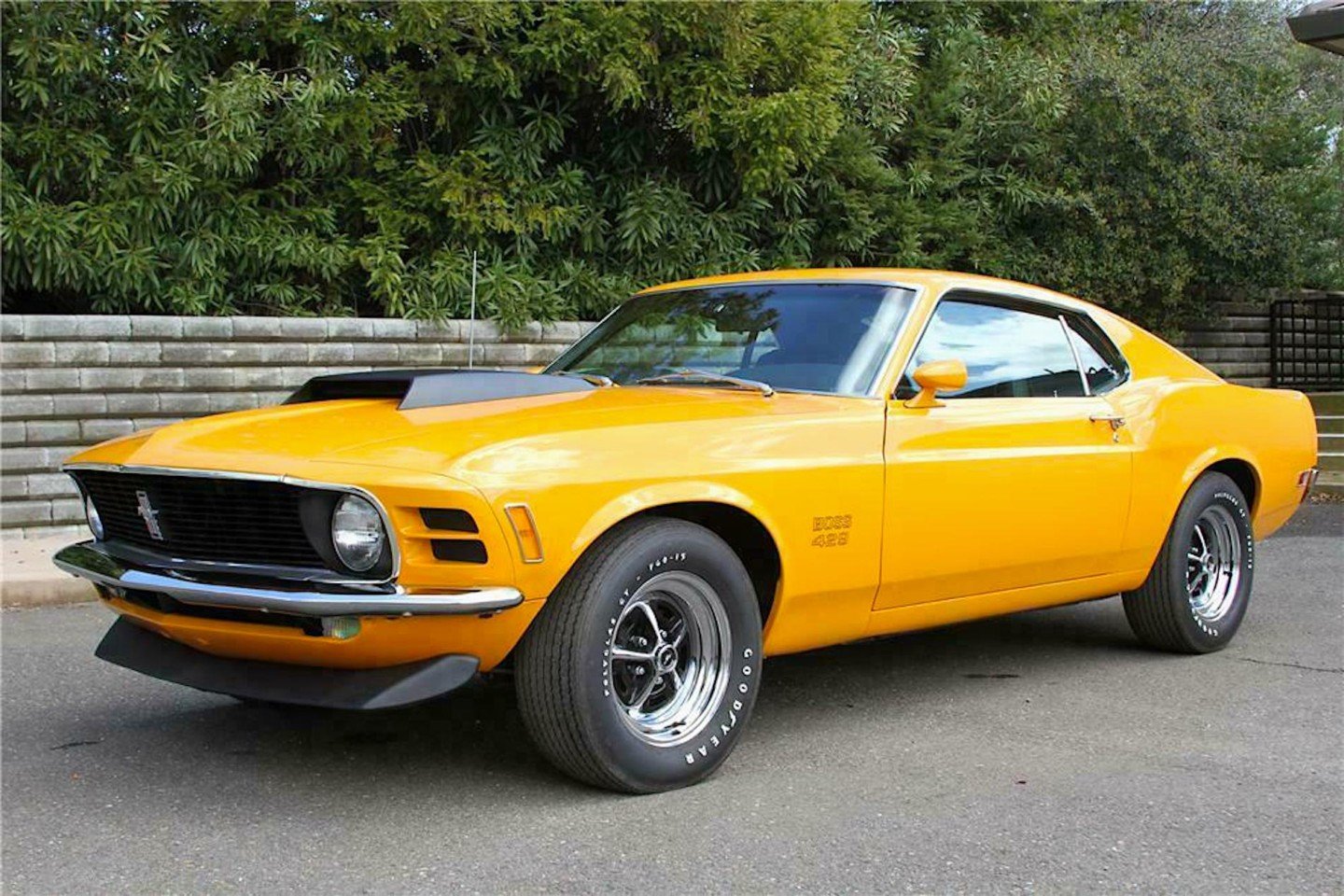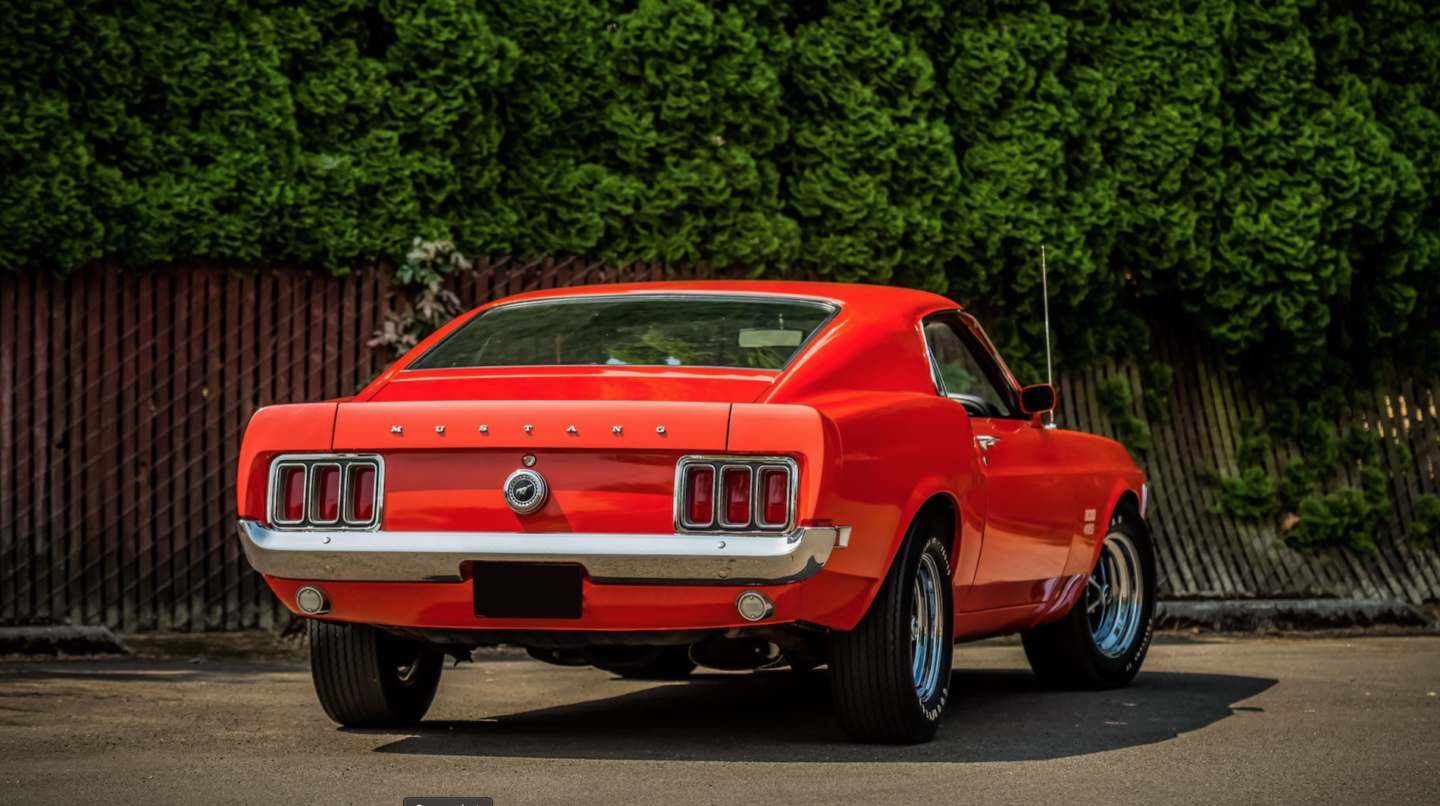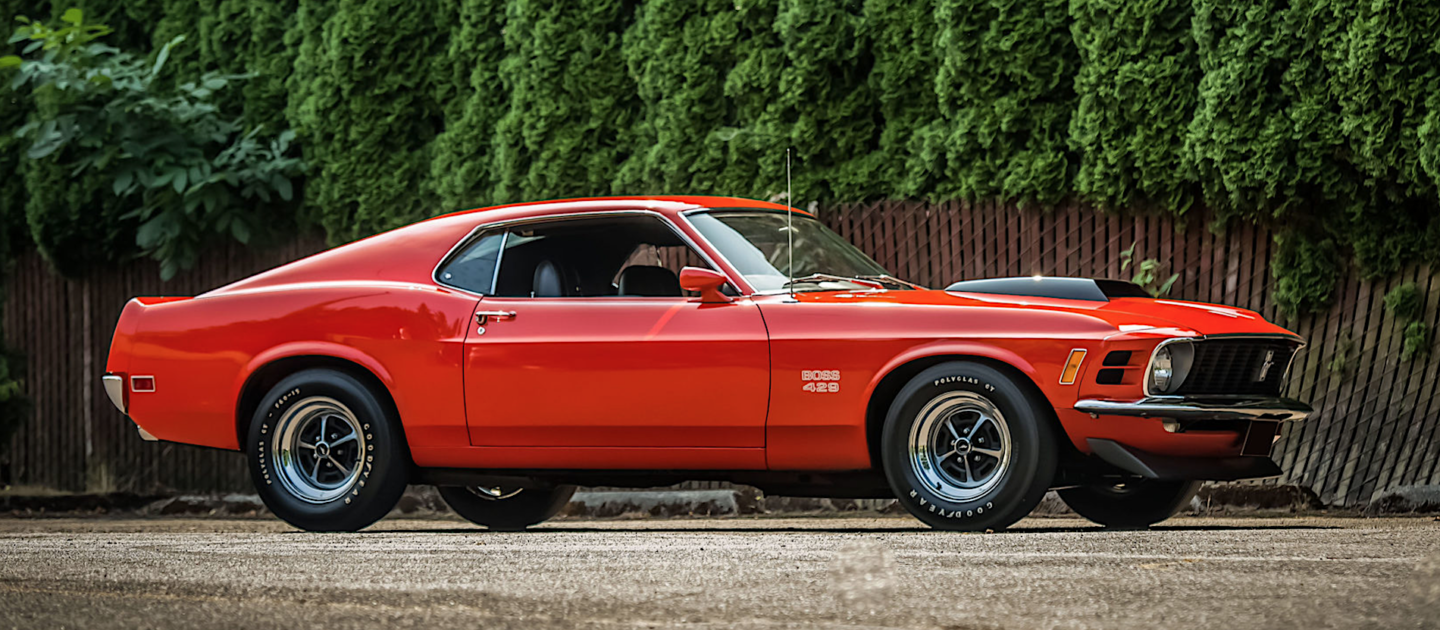Many of you who read my columns are no doubt aware, I am a Mopar guy through and through. In my recent article, Rob’s Movie Muscle: The 1971 Plymouth ‘Cuda From Nash Bridges, I detailed my experience working on the show, which led to my love of all things Pentastar.
What you may not know is I also have an undying affinity for Mustangs. In fact, my first car was a 1987 LX convertible. My end all, be all, favorite Mustang is the 1967-’68 Shelby GT500, but I’ve always had a thing for another brutal example of big block ‘Stang.
For this month’s edition of “Rare Rides,” we’ll have a look at this low-volume beast – the 1970 Mustang Boss 429!
The original Mustang was the brainchild of legendary automotive executive, Lee Iacocca. Known internally at Ford as the T5 project, the Mustang was a revolutionary idea – to pack sportiness, style, and performance into a simple, low-cost coupe within reach of most young professionals.
To keep the initial startup costs and sales price low, the Mustang’s construction utilized many parts and components from other Ford models, most notably the Fairlane and Falcon. The chassis, suspension, interior, and even the drivetrain were repurposed for the new car. Thus, the only uniquely Mustang thing about it was the beautifully sculpted body.
The concept was unusual for the day and would have provided a financial stop-loss should the car fail to achieve the predicted sales of roughly 90,000 units.
Those concerns were relegated to laughable status when the Mustang, famously introduced at the New York World’s Fair in 1964, found 22,000 buyers on the first day. Sales eventually reached 263,434 by the end of ’64, and a record 418,812 by the end of the model year. The patchwork newcomer was an instant classic and icon. Seeking a performance version of their new baby, Ford contracted Shelby American to produce the GT350, which added another 562 cars to the tally.
The Mustang invented a whole new class of vehicle – the pony car – because of its astonishing success. It went on to inspire such imitators as the Chevrolet Camaro, Pontiac Firebird, Plymouth Barracuda, and Dodge Challenger.
From the start, Mustangs were available as coupes, convertibles, and glorious fastback versions. The first-gen Mustang carried-on mostly unchanged until 1967 when the car was restyled entirely into what many, myself included, consider to be the most beautiful iteration. Front and rear end styling was elegantly rendered, and the interior was given bespoke treatment. Once again, Carroll Shelby produced the high-power version of the car, this time in GT350 and big-block GT500 editions.
Sales continued to be healthy, albeit down somewhat from the first-gen. Not satisfied to rest on its laurels, Ford once again restyled the car for 1969.
The third version was controversial from the get-go, with love-it-or-hate-it styling, markedly increased length and width, and a resultant increase in weight as well. Still easily recognizable as a Mustang, this generation lent a distinctly more muscular aura to the car, dispensing with a good amount of elegance in trade for a more brutish look.
To go along with the tougher aesthetic, Ford opened the floodgates for options offering actual performance. Chin and deck spoilers, functional hood scoops, and wider wheels were a good start. But, the game changer consisted of three distinct, non-Shelby performance packages: the Mach 1, Boss 302, and the mighty Boss 429.
The Mach 1 was only available in a “Sportsroof” fastback-style body with a selection of V8 engines ranging from a 351 Windsor to the 428 Super Cobra Jet. A host of aesthetic and performance bits included a matte black hood with hood pins, Shaker hood scoop, upgraded suspension, performance wheels and tires, and various spoilers and louvers.
The Boss 302 Mustang was created to satisfy homologation guidelines so Ford could compete in the SCCA Trans-Am series, which required that a certain number of street versions were built. The series also deemed engines to be limited to 305 cubic-inches or less. So Ford developed a high-performance version of its venerable 302. With screw-in freeze plugs, 4-bolt mains, and heads with canted valves, this engine transferred into the street cars largely unmolested.
Like the Mach 1, the Boss 302 Mustang featured a host of add-ons, such as stripes, blacked-out hoods, and hood pins.
The big dog in Ford’s performance lineup for 1969–’70, though, was the Boss 429. Along with the Boss 302, the car’s name derived from designer Larry Shinoda’s habit of keeping his projects secret by flippantly saying he was working on his “boss’ car.” The engine’s massive dimensions bolstered the name as well.
Like the Boss 302, the Boss 429 was the result of Ford’s desire to go racing in 1969. However, unlike the 302, the 429 was a homologation required for NASCAR, instead of Trans-Am racing. Virtually a race car for the street, the Boss 429 chassis was built at the Ford factory in Dearborn before being handed over to an outfit known as Kar-Kraft, a firm contracted to handle the engineering aspects of the project.
The heart of this beast was a 385-series, 429 cubic-inch monster with a 4.36-inch bore, 3.59-inch stroke, and a 10.5:1 compression ratio. A forged-steel, cross-drilled crankshaft and forged aluminum pistons were used for maximum strength and durability.
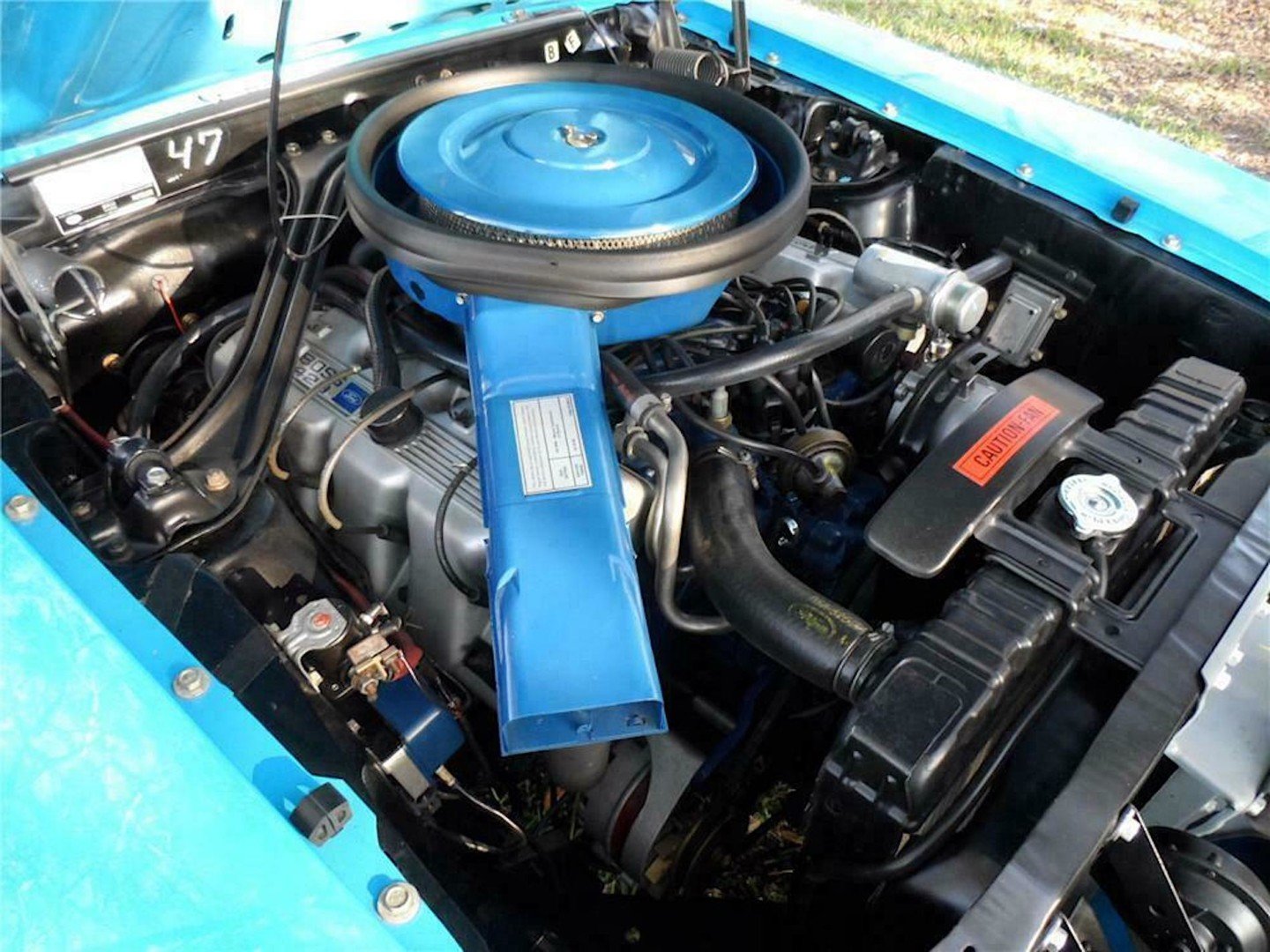
The 429-cubic-inch V8 was massive and required significant engineering to fit it in the car. (Photo courtesy of Barrett-Jackson Auctions.)
Massive aluminum cylinder heads featured crescent chambers leading to a “Semi-Hemi” nickname. Round intake ports fed 2.28-inch valves, while the exhaust ports had 1.90-inch ones.
The cylinder heads were sealed with copper O-rings around each passage, and ten bolts held each head in place. Intake and exhaust rocker-arm ratios were 1.65:1 and 1.76:1, respectively.
An aluminum, dual-plane, high-rise intake manifold was present, along with a big Holley 735cfm four-barrel carburetor. Aluminum rocker-arm covers and an oil cooler were standard issue.
The 1970 Boss 429 – the car we are focused on – had some modifications that made it even more of a runner than the 1969 version. These notably consisted of a switch to a solid-lifter camshaft, an upgraded Holley four-barrel carb, a lightweight five-blade fan, and straight-through exhaust pipes that eliminated the ‘69’s muffler.
The factory numbers for the 429 were 375 horsepower and 450-lb-ft of torque – both of which were seriously underrated for insurance purposes. A conservative estimate put the 1970 lump at 35- to 40-more ponies.
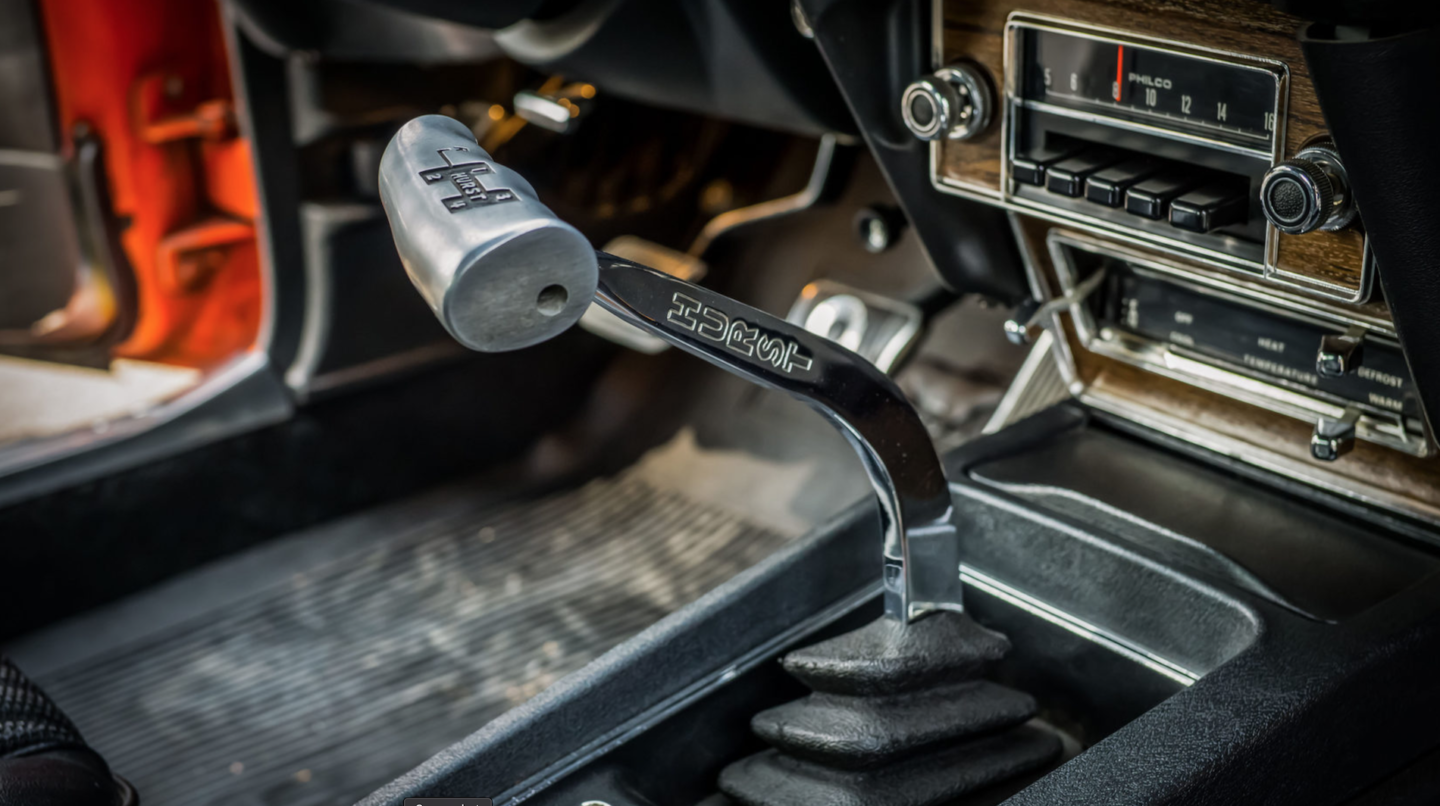
A Hurst shifter connects the driver to the Toploader four-speed manual. (Photo courtesy of Mecum Auctions.)
In 1970, the Boss 429 was available with only one transmission – a Toploader four-speed manual with a Hurst T-handle shifter. An 11.5-inch clutch transmitted power to Ford’s durable 9-inch Traction-Lok limited-slip unit with a 3.91:1 final drive ratio.
The suspension consisted of an independent front arrangement with control arms, coil springs, Gabriel hydraulic shocks, and an anti-roll bar. Out back were heavy-duty shocks, semi-elliptic heavy-duty leaf springs, and a thinner anti-roll bar.
Stopping this behemoth were the same 11.3-inch power front discs as the Boss 302, with 10- x 2-inch drums in the rear. Likewise, the 429’s 15- x 7-inch Magnum 500 five-spoke wheels were the same as on the 302. They were shod with Goodyear Polyglas F60-15 bias-ply tires.
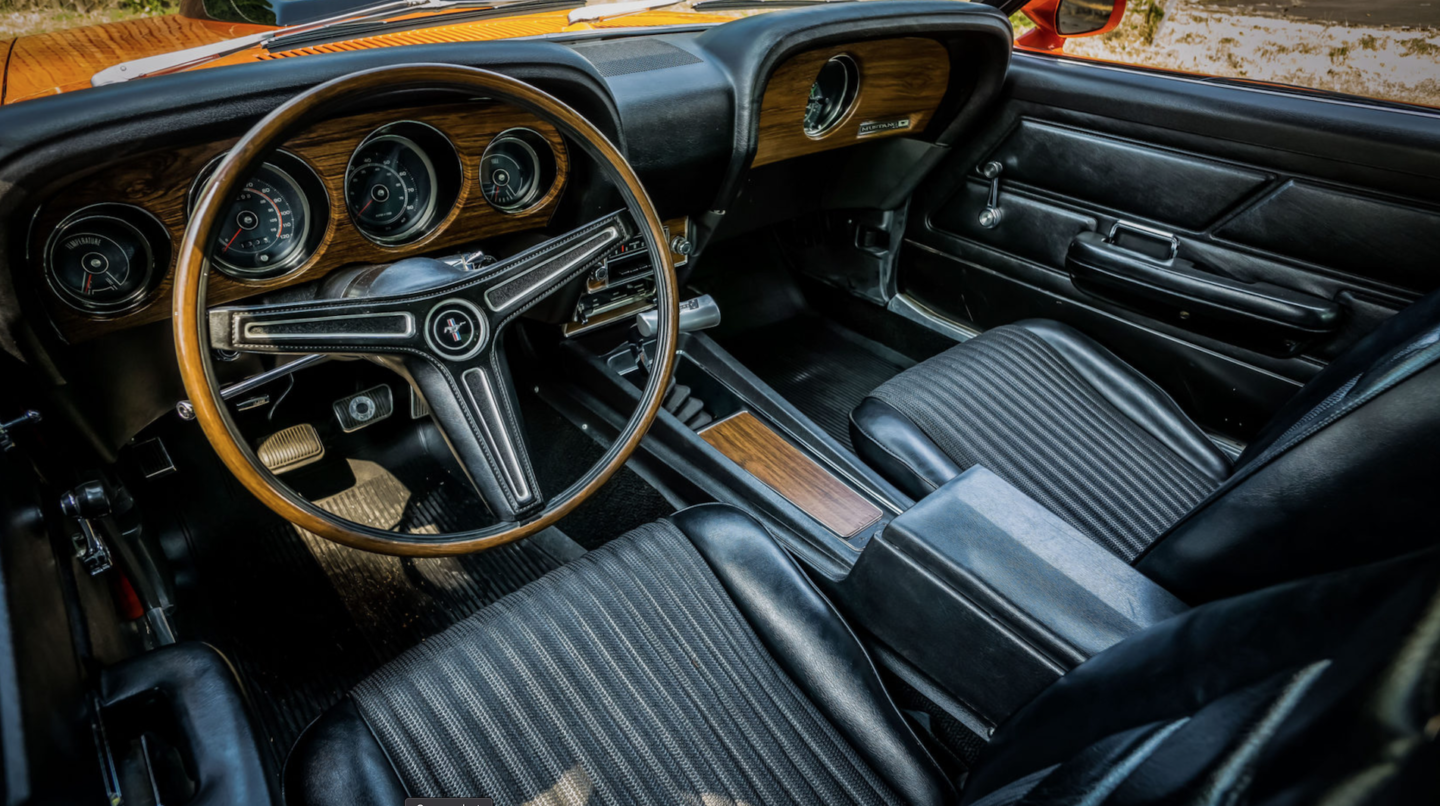
The Boss 429’s interior was largely similar to that of a regular Mustang. (Photo courtesy of Mecum Auctions.)
The car’s interior was similar to regular Mustangs of this generation. It featured Comfortweave knitted vinyl front bucket seats, simulated wood-grained inserts, 8,000 rpm tach, AM radio, manual choke knob, and Rim-Blow steering wheel. No air-conditioning was offered, as a unit couldn’t fit in the cramped engine bay. In 1970 only, the interior could be optioned in white in lieu of the standard black.
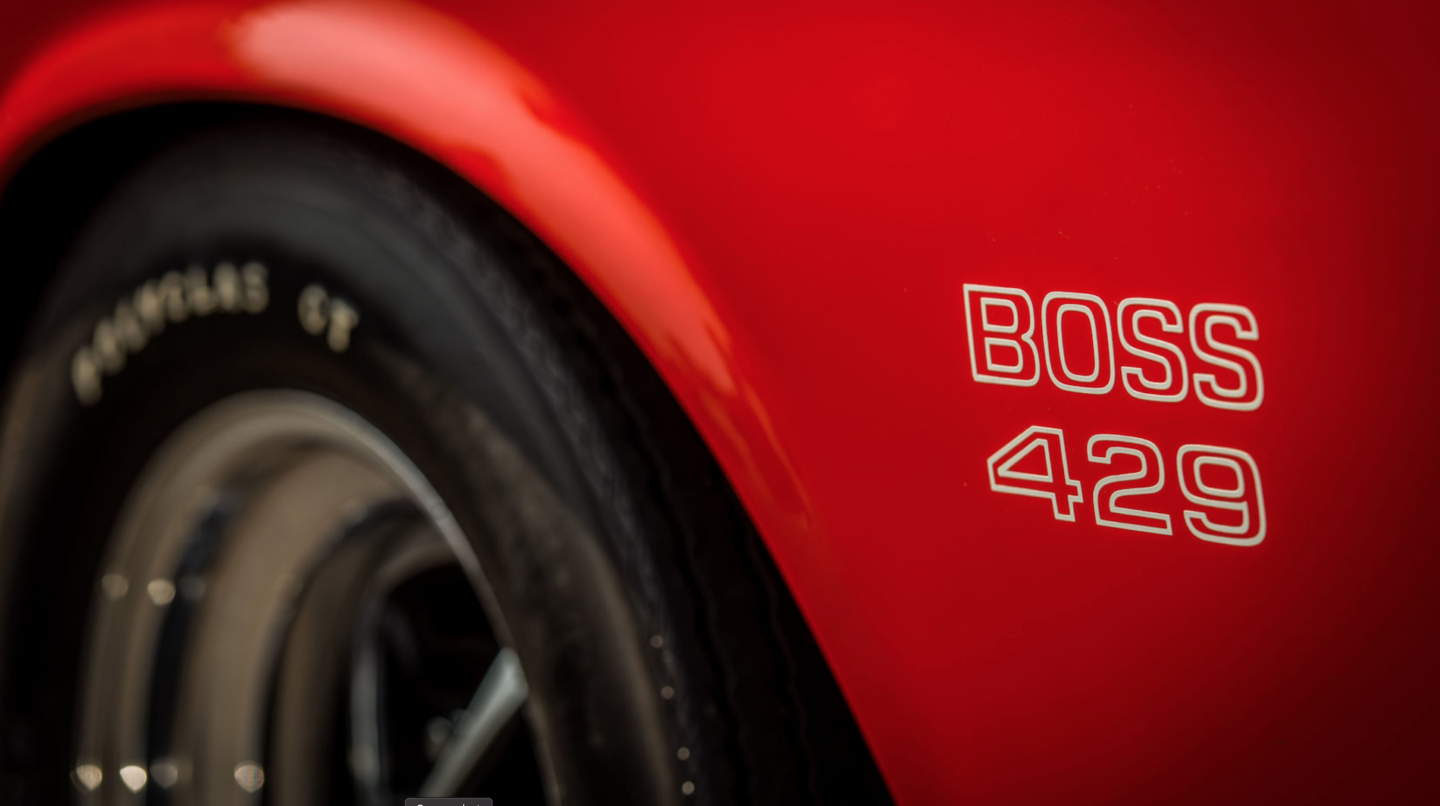
The 429 wasn’t festooned with stripes and blackouts like the other performance models of this generation. (Photo courtesy of Mecum Auctions.)
Boss 429s were only available in a fastback body. A small handful of colors could be ordered, though the first 150 or so wore Ford’s traditional Grabber Blue. Unlike the Mach 1 and Boss 302, there were no blacked-out hoods or ubiquitous stripes. In fact, the only contrast elements the 1970 car wore were a boxy, matte-black hood scoop, matte-black chin spoiler, and restrained Boss 429 fender graphics.
Despite a weight of 3560 pounds, the mighty 429 engine was able to propel the car to a 5.1-second 0-60 time. It also boasted an impressive 13.6-second quarter-mile at 106.3 mph. Flat out, the Boss 429 could hit 147 mph. Heady stuff for the day, and not slow even by today’s standards.
Unfortunately for performance Mustang enthusiasts of the time, the Boss 429 only lasted the two model years. It was discontinued when Ford abruptly pulled the plug on its motorsports activities. There was no need for homologation models for series in which Ford was no longer competing.
But the period enthusiasts’ pain is the modern collector’s gain, as the 429 was thusly produced in severely limited numbers. 1,359 Boss 429s were produced in total, with 859 made in 1969 and a paltry 500 manufactured in 1970.
As such, 1970 Boss 429s fetch major bucks today, with top examples changing hands routinely for mid-six figures. But, who on earth would be surprised by this for such a fantastic “Rare Ride?”

